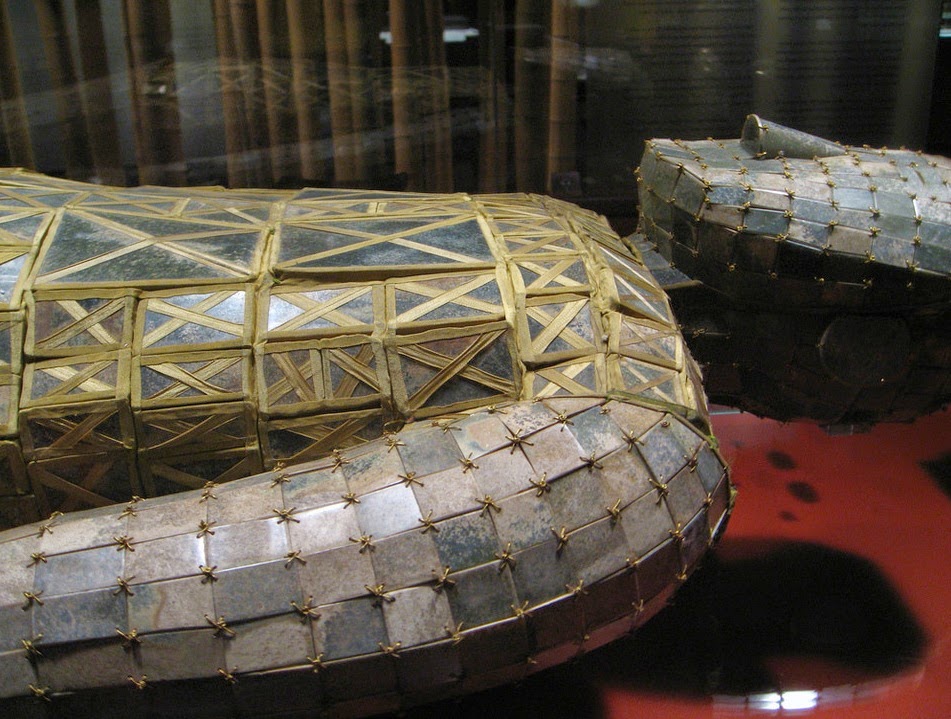Jade Burial Suits Immortality yesterday with Gold Thread
(China)
Jade burial suit - it is the
collective name of the archaeological finds from China, which are themselves
linked with gold and silver burial suits. They were used as a protection for
the afterlife, preventing the decomposition of the body of the owner.
The first documentary evidence
of jade suits date back to 320 BC, although archaeologists say they have
appeared for half a millennium before. For the first time jade garments were
investigated in 1968 after excavation grave of Prince Liu Sheng and his wife
Princess Dou Wan. One of the most important archaeological finds of the XX
century - the untouched tomb of the rulers of the Han Dynasty was unearthed in
Hebei Province.
Each of the green funeral
costume consists of two thousand jade tiles. While the princess costume is sewn
with silver thread, armor Prince Liu Shen sparkling gold metal. All were found
about twenty jade suits: so rare due to their high cost and complexity of
manufacture. Even the most skillful smith had to work on the creation of a suit
at least 10 years. In 223 BC Emperor Wen ordered to stop production of jade
suits, as many thieves ripped and burned the tomb of costumes to get the golden
thread.
The Chinese believed that jade
is not only able to prevent the decomposition of soft tissues, but also wards
off evil spirits. Who is the mysterious costumes are stored in the Museum of
Hebei Province.












%2B1.jpg)